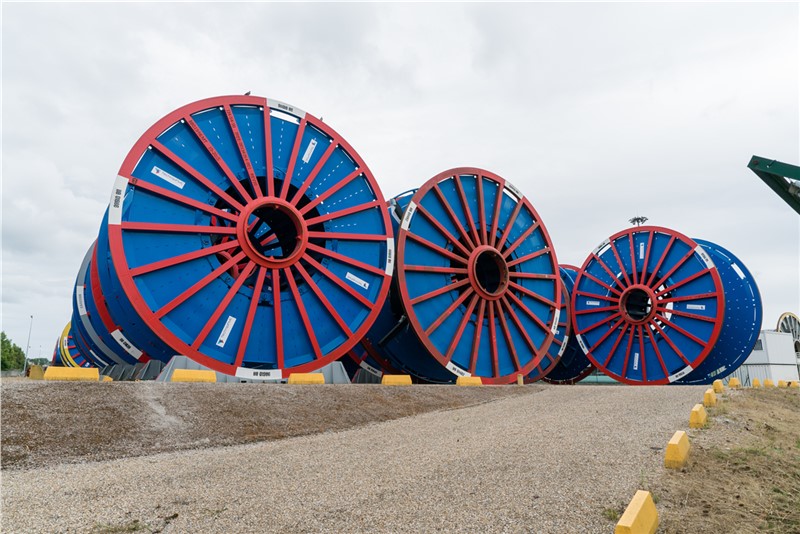Tuesday 10 January 2023, Amsterdam

Water comprises 70% of our world, and it is simple to believe that it will always be plenty. However, freshwater—the substance we drink, bathe in, and use to irrigate our farm fields—is extremely scarce. Only 3% of the world's water is fresh water, and two-thirds of that is trapped in frozen glaciers or otherwise unavailable for human consumption. As a result, around 1.1 million people globally lack access to water, and a total of 2.7 million face water scarcity for at least one month of the year. Inadequate sanitation is also a concern for 2.4 million people, exposing them to diseases such as cholera and typhoid fever, as well as other water-borne disorders. Every year, diarrheal diseases kill two million people, usually children.
Industrial Use Canbe Done by Desalination to Save Fresh Water for Drinking Purpose
Because of the growing demand for a safe, dependable, and regular supply of water, many manufacturing industries and water treatment plants have begun to hunt for effective desalination plants. Desalination is the process of removing minerals from water (seawater, brackish water, or treated water) to make it pure for various commercial uses. Processed water is required by many sectors for manufacturing, water treatment, and other operations. Sometimes the water quality is insufficient or does not satisfy the quality criteria for production reasons. Desalination plants are used by enterprises to purify water for their consumption.
Increasing Irrigation Water Sources for Sustainable Crop Production
The water obtained by this process is used for many agricultural purposes like irrigation and is mostly used in areas where there is scarcity of water for example in deserts, etc. that are experiencing droughts. Water resources for agricultural production have been declining globally. This is due to a rise in water demand over limited supplies and low quality water, which has a negative impact on crop quality and production and deteriorates soil qualities. Despite the fact that soil salinity has been a problem for agriculture for thousands of years, serious research has only been performed in the last 100 years. Desalination, the process of reducing the salt concentration in water to an acceptable level, could be an option for improving water quality, increasing water sources, and decreasing competition among various water users. As a result, desalination could improve crop quality, productivity, and allyear crop output, making it an important tool for sustainable agricultural water management.
Increasing Investment by Governments to Build Mega Desalination Plants and Advancements in Technology
The United States Department of Energy (DOE) and the National Alliance for Water Innovation (NAWI) have announced a $5 million federal grant to explore desalination technology that would assist deliver freshwater supplies to communities across the country. These water innovation ideas enable amazing progress in improving energy efficiency in desalination operations. By constructing a circular economy of water that is more energy efficient and powered by renewable electricity, the company are not only continuing our industry's decarbonization, but the company are also pushing the company’s water and wastewater infrastructure one step further into the future, carving out a cleaner, greener energy economy for future generations. Many towns' water sources have excessive levels of salt and pollutants, a problem that can be exacerbated by changing precipitation patterns caused by the climate crisis and regional population growth. Desalination can help to diversify the available water resources. This will enable the United States achieve net-zero carbon emissions by 2050 while also providing all Americans with new sources of freshwater.
Ships Cruise Use Desalination Plant on Deck for Fresh Water
Cruise ships will carry as much fresh water as they need for each passenger, unless the ship is a larger, more sophisticated vessel that can manufacture its own drinking water. They won't carry as much as a result; instead, it will be manufactured as needed. At any given time, certain cruise ships can contain up to 2 million laters of water. Cruise ships always have access to fresh water obtained through a variety of methods. Some of the more contemporary and large cruise ships, for example, manufacture their own fresh water onboard via a desalination plant. If the cruise ship is small or ancient, it will get fresh water at some point before departing from port. This water is stored in large tanks that may hold up to 500,000 gallons of water. Ships that use desalination plants will pump and pressurise seawater to prepare it for filtration.

ASDReports.com contact: S. Koomen
ASDReports.com / ASDMedia BV - Veemkade 356 - 1019HD Amsterdam - The Netherlands
P : +31(0)20 486 1286 - F : +31(0)20 486 0216